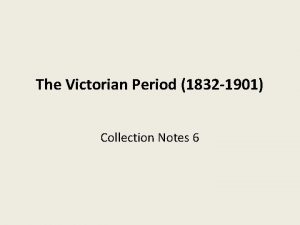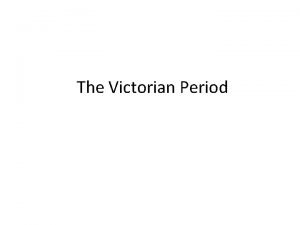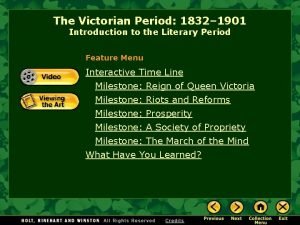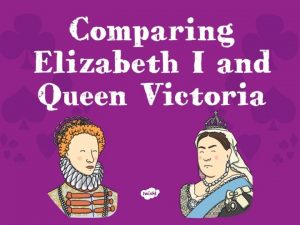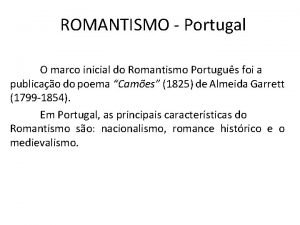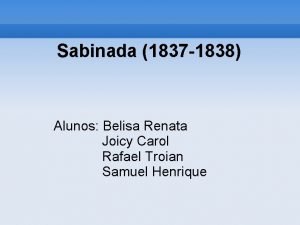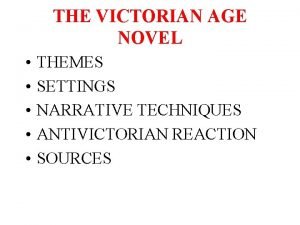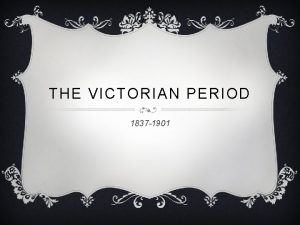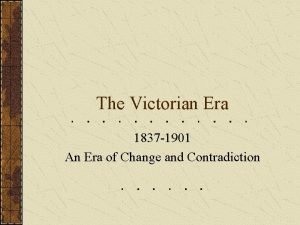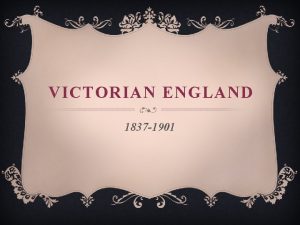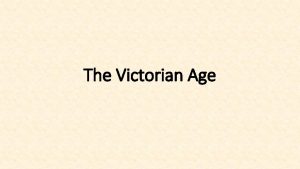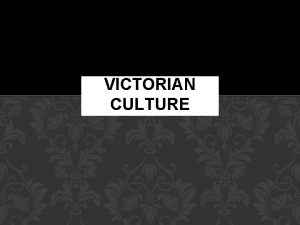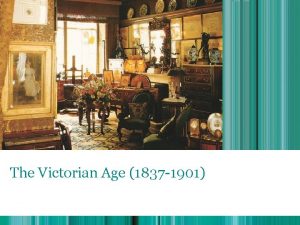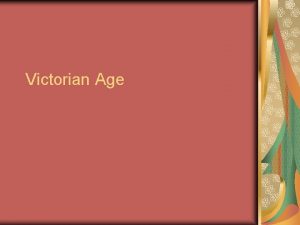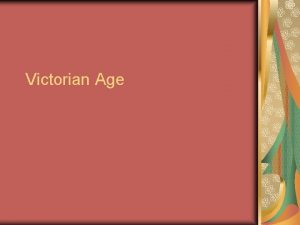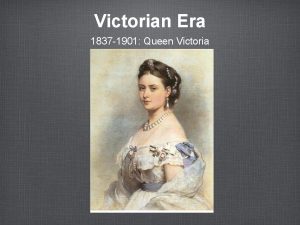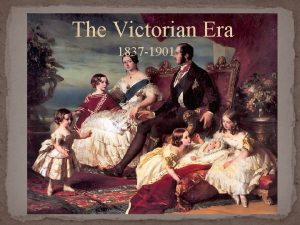The Victorian Era 1837 1901 The 18 th














- Slides: 14

The Victorian Era 1837 -1901

The 18 th Century William and Mary (1685 -1702) Anne (Mary’s Sister—last Stuart) 1702 - 1714 There were many closer heirs to Anne, Emerging 2 party system but they were all Catholic; As a result, “Whigs” and “Tories” George’s reign was questioned by the Catholics; deposing was attempted and failed. George I (House of Hanover; Anne’s 2 nd Cousin) 1714 -1727 Monarchy Power Declined Prime Minister Established Robert Walpole George II (1727 -1760) George III (George’s Grandson)

“I am Not Amused” George III George IV William IV Victoria (63 years!) 9 Children and 34 Grand children Edward VI

High Society (social Class) • Upper class; elite; socialites • In the Victorian Era – Valued: history, heritage, lineage and the continuity of their family line. – Believed: • born to rule through divine right • Noblesse Oblige the Elite's duty to take care of society – Hoped: to continue tradition and the status quo • primogeniture (first born son inherits everything) – Enjoyed a life of luxury and leisure • Owned most everything around – By the late Victorian period—the middle class was only beginning to be recognized

Jane Austen The Art of Social Commentary in Pre-Victorian and Victorian British Society

Social Commentary • Expressing one’s thoughts and views for the betterment of society… • Purpose? PERSUADE

Jane Austen • Remained unmarried, but wrote about the institution of marriage with remarkable insight. – Was proposed to at least once; turned him down • Devoted to her family; corresponded with them often • Daughter of a clergyman in a family of eight children

Anonymous…but why? • Published anonymously—most women of her time did, because to be a published woman was very vulgar—women were meant to be genteel

Social Commentary • Main focus: absurdities of social life • Medium: satirical • Intention: make brilliant observations on human nature and shows a gift for contriving dramatic situations. – “It is a truth universally acknowledged, that a single man in possession of a good fortune, must be in want of a wife. ” (Pride and Prejudice)

Unconscious or conscious? • Unconscious – when a writer points to a problem caused by social customs without explicitly challenging those customs. • conscious – when a writer directly attributes a problem to social customs.

“On Making an Agreeable Marriage” • A letter from an Aunt to a Niece – Primary or Secondary source? – Why do we need to establish this? • Purpose of a letter? – Inform of the going ons in life – Entertain with stories – Persuade one to take advice

As we Read… Author’s tone Author’s Purpose Your Reaction

Courtship in the 19 th Century Love Examples from letter Importance Compatibility Money Respectability

What does this tell us about courtship and marriage?
 1837 to 1901
1837 to 1901 The three uses of money
The three uses of money Victorian period victorian era floral design
Victorian period victorian era floral design Byzantine floral history
Byzantine floral history Victorian age 1832 to 1901
Victorian age 1832 to 1901 The victorian age 1832 to 1901 unit test
The victorian age 1832 to 1901 unit test Victorian age
Victorian age The victorian period (1832–1901)
The victorian period (1832–1901) Elizabethan vs victorian
Elizabethan vs victorian Marco inicial do romantismo em portugal
Marco inicial do romantismo em portugal Florence nightingale 1837
Florence nightingale 1837 Movimento bahiense 1837
Movimento bahiense 1837 Movimento bahiense 1837
Movimento bahiense 1837 Nickolas nickelby
Nickolas nickelby The yellow wallpaper victorian era
The yellow wallpaper victorian era




